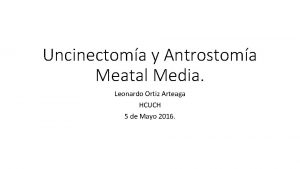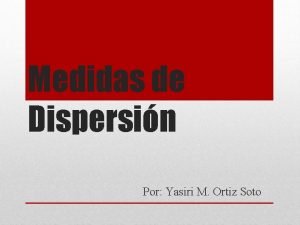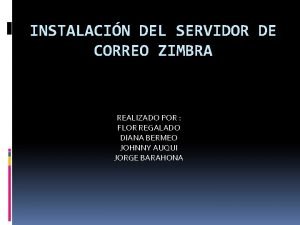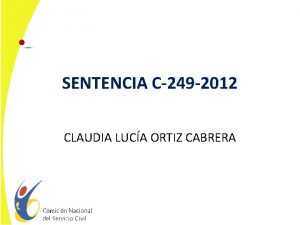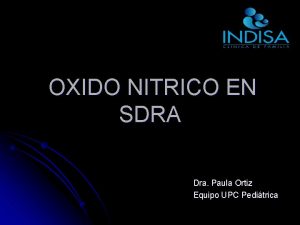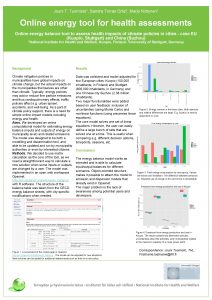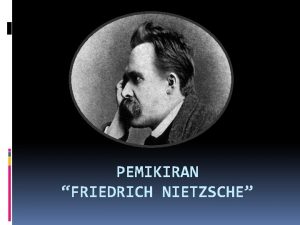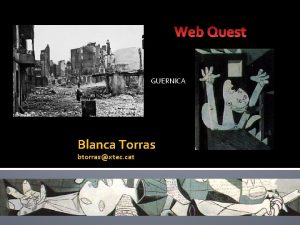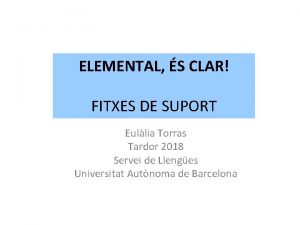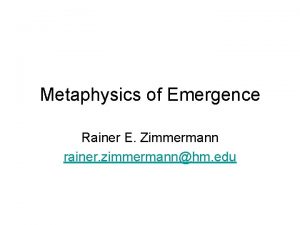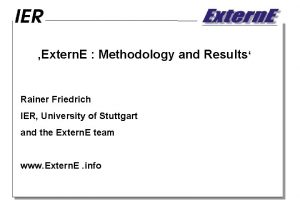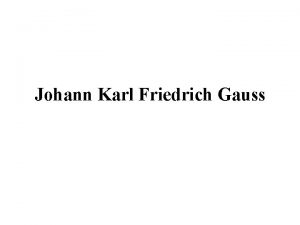WP 2 Energy Rainer Friedrich Sandra Torras Ortiz
















- Slides: 16

WP 2 Energy Rainer Friedrich, Sandra Torras Ortiz, Ganlin Huang Institute for Energy Economics and the rational Use of Energy – University Stuttgart, Germany Jouni T. Tuomisto, Marjo Niittynen National Institute for Health and Welfare, Finland City Partners

Outline ● Work Package Energy i. Energy balance ii. Energy scenarios for future years ● Results i. Traffic interventions ii. Biomass (Pellets) use in domestic heating ● Lessons learned

Main goal: To analyse specific urban GHG policies regarding their expected influence on health by emission reduction, changes in energy demand supply Supply Consumption Loses (Transformation , Transport, Exports, etc. ) International energy market Energy balance

Energy carrier supply Coal Biomass production Power Plants and electricity distribution Combined Heat and Power Plants (CHP) & District heating plants Electricit y Heat Gas distribution from outside city biomass Final Energy Demand (light, vkm Passsenger cars, heating of Dwellings …) Biomass conversion Technologies (passenger car, (diesel), Small combustion (biomass) Fuel oil Refineries Inside city Gas, oil, coal, renewables (secondary & primary energy carriers Energy balance Energy services

Energy balance at a City level Stuttgart

Energy balance at a City level Basel

Energy scenarios for future years Regional Coverage Pan-European TIMES Model The model illustrates the whole energy system of the different member states of the EU-27 plus Iceland, Norway and Switzerland

er s th O te as W s le ea t H ty ci ab en ew R tri ec as 30% G l s uc t od pr oa C 40% El um le tro % Final energy consumption Switzerland Pe ty ci as H ea en ew t ab le s W as te O th er s R tri ec G s uc t l oa C od pr El um le tro Pe % Final energy consumption Energy scenarios for the years 2020 -2025 50% Germany 20% 10% 0% 60% 50% 40% 30% 20% 10% 0% 8

Stuttgart –Traffic interventions What are the expected human health impacts related to traffic interventions compared to the business as usual (BAU) scenario for the year 2025? Traffic interventions analysed: ● Introduction of a congestion charge in the City of Stuttgart: The amount of 0. 10 € is raised per kilometer driven by passenger car ● Extension of parking management: expansion of parking management in the districts surrounding the city center of Stuttgart. ● Improved public transport: light rail frequency in the off-peak times is increased ● Improved cycling network ● Combined scenario

Stuttgart –Traffic interventions % Reduction compared to 2010 100% 80% 60% 40% 20% 0% PM NO 2 NOX CO 2 Diesel Gasoline Reduction on Traffic Emissions and fuel use in BAU 2025 compared to Baseline 2010

Stuttgart –Traffic interventions BAU_2025 + CC BAU_2025 + PM BAU_2025 + PT % Reduction compared to BAU 2025 BAU_2025 + Cycling BAU_2025 + All 25% 20% 15% 10% 5% 0% PM NO 2 NOX CO 2 Diesel Gasoline Reduction on Traffic Emissions and fuel use for each intervention compared to BAU 2025

Stuttgart - Pellet boilers scenarios I What are the expected human health impacts related to the increasing use of wood pellets in Stuttgart? ● Business as Usual (BAU) Scenario: pellet boilers are installed throughout the entire city of Stuttgart with growth rates similar to historical growth rates (2001 -2008). ● Ban on Burning Scenario (BB): pellet boilers are not installed within the Stuttgart city center, but only in the outer districts. ● Substantial Growth Scenario (SG): pellet boilers are installed throughout the entire city of Stuttgart with growth rates as expected by the DEPV (German Wood and Pellets Fuel Association) which estimates 1 million units by 2020 in Germany.

Stuttgart - Pellet boilers scenarios II Ban on burning Substantial growth Number of pellet boilers in Stuttgart (2025)

Stuttgart - Pellet boilers scenarios III 0. 2 0. 15 0 -1000 Substantial growth Burning Ban -2000 DALYS CO 2 Emissions (Kg) 1000 0. 1 0. 05 -3000 0 -4000 -5000 -0. 05 Substantial growth Burning Ban CO 2 emissions change due to replacement of traditional energy (Stuttgart mix) with biomass. Total CO 2 associated to the household sector ca. 450 Thousand tons. Average filter technology was assumed, newer filter technology could decrease particulate matter substantially (around 40 -70% lower emissions) DALYS: Disability Adjusted Life Years

Greenhouse Gas Balances 12 Rest CO 2 eq/MJ 10 Drying Heat 8 Diesel Engine Operation Electrical Energy 6 4 Storage 2 Tractor Operation 0 Industrial Wood Residues Forest Wood Residues Greenhouse gas emissions produced in the preparation of raw material for pellets made of industrial wood residues and forest wood residues (Source: Bio. Energie. Dat, 2012)

Lessons learned Energy substitution in domestic heating ● Pellet boilers contribute to reduce CO 2 emissions by replacing fossil energy sources at a global scale. However, at a local scale, higher particulate matter emissions could be associated to additional local human health impacts. ● Significant differences in wood pellets concerning their up- and down stream CO 2 emissions. Traffic ● Interventions in the traffic sector account for small reductions at a local scale. In the specific case of Stuttgart, the emission reductions may not justify the large effort needed to implement the interventions. Human health assessment to be completed within the next months
 Sandra torras
Sandra torras Sandra ortiz de rozas
Sandra ortiz de rozas Energy energy transfer and general energy analysis
Energy energy transfer and general energy analysis Energy energy transfer and general energy analysis
Energy energy transfer and general energy analysis Antrostoma
Antrostoma C-lim interpretation
C-lim interpretation Evie ortiz
Evie ortiz Yasiri ortiz
Yasiri ortiz Zimbra gerardo ortiz
Zimbra gerardo ortiz João leite ortiz
João leite ortiz Isss portal usu
Isss portal usu Lucia ortiz amaro
Lucia ortiz amaro Ricardo ortiz serrano
Ricardo ortiz serrano Dra paula ortiz
Dra paula ortiz Judith ortiz cofer biography
Judith ortiz cofer biography Física moderna ramas
Física moderna ramas Luis fernando valeriano ortiz
Luis fernando valeriano ortiz




